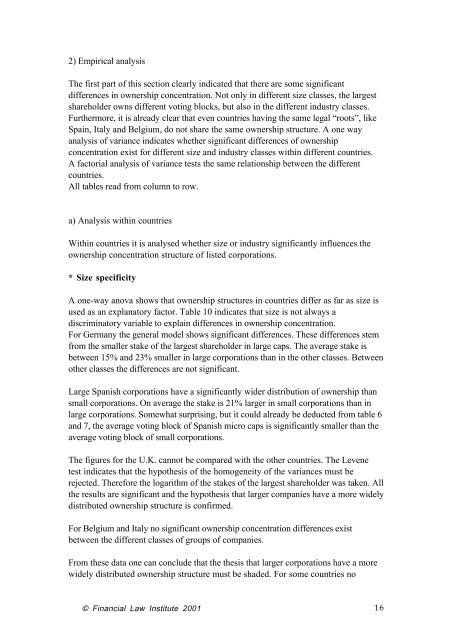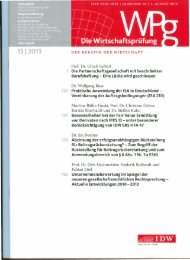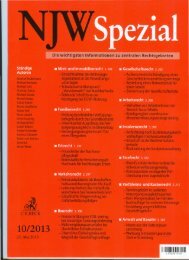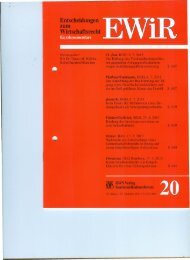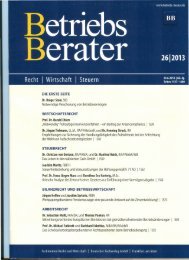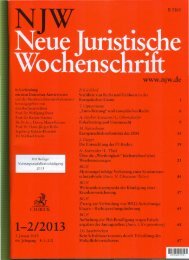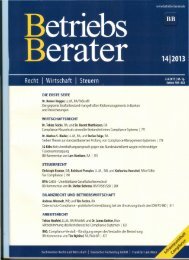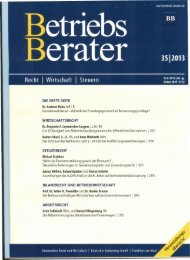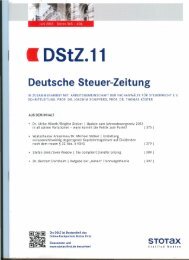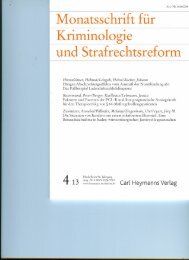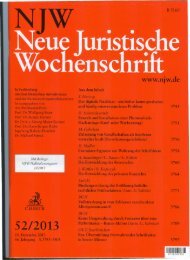Download - Universiteit Gent
Download - Universiteit Gent
Download - Universiteit Gent
You also want an ePaper? Increase the reach of your titles
YUMPU automatically turns print PDFs into web optimized ePapers that Google loves.
2) Empirical analysis<br />
The first part of this section clearly indicated that there are some significant<br />
differences in ownership concentration. Not only in different size classes, the largest<br />
shareholder owns different voting blocks, but also in the different industry classes.<br />
Furthermore, it is already clear that even countries having the same legal ÒrootsÓ, like<br />
Spain, Italy and Belgium, do not share the same ownership structure. A one way<br />
analysis of variance indicates whether significant differences of ownership<br />
concentration exist for different size and industry classes within different countries.<br />
A factorial analysis of variance tests the same relationship between the different<br />
countries.<br />
All tables read from column to row.<br />
a) Analysis within countries<br />
Within countries it is analysed whether size or industry significantly influences the<br />
ownership concentration structure of listed corporations.<br />
* Size specificity<br />
A one-way anova shows that ownership structures in countries differ as far as size is<br />
used as an explanatory factor. Table 10 indicates that size is not always a<br />
discriminatory variable to explain differences in ownership concentration.<br />
For Germany the general model shows significant differences. These differences stem<br />
from the smaller stake of the largest shareholder in large caps. The average stake is<br />
between 15% and 23% smaller in large corporations than in the other classes. Between<br />
other classes the differences are not significant.<br />
Large Spanish corporations have a significantly wider distribution of ownership than<br />
small corporations. On average the stake is 21% larger in small corporations than in<br />
large corporations. Somewhat surprising, but it could already be deducted from table 6<br />
and 7, the average voting block of Spanish micro caps is significantly smaller than the<br />
average voting block of small corporations.<br />
The figures for the U.K. cannot be compared with the other countries. The Levene<br />
test indicates that the hypothesis of the homogeneity of the variances must be<br />
rejected. Therefore the logarithm of the stakes of the largest shareholder was taken. All<br />
the results are significant and the hypothesis that larger companies have a more widely<br />
distributed ownership structure is confirmed.<br />
For Belgium and Italy no significant ownership concentration differences exist<br />
between the different classes of groups of companies.<br />
From these data one can conclude that the thesis that larger corporations have a more<br />
widely distributed ownership structure must be shaded. For some countries no<br />
© Financial Law Institute 2001 16


